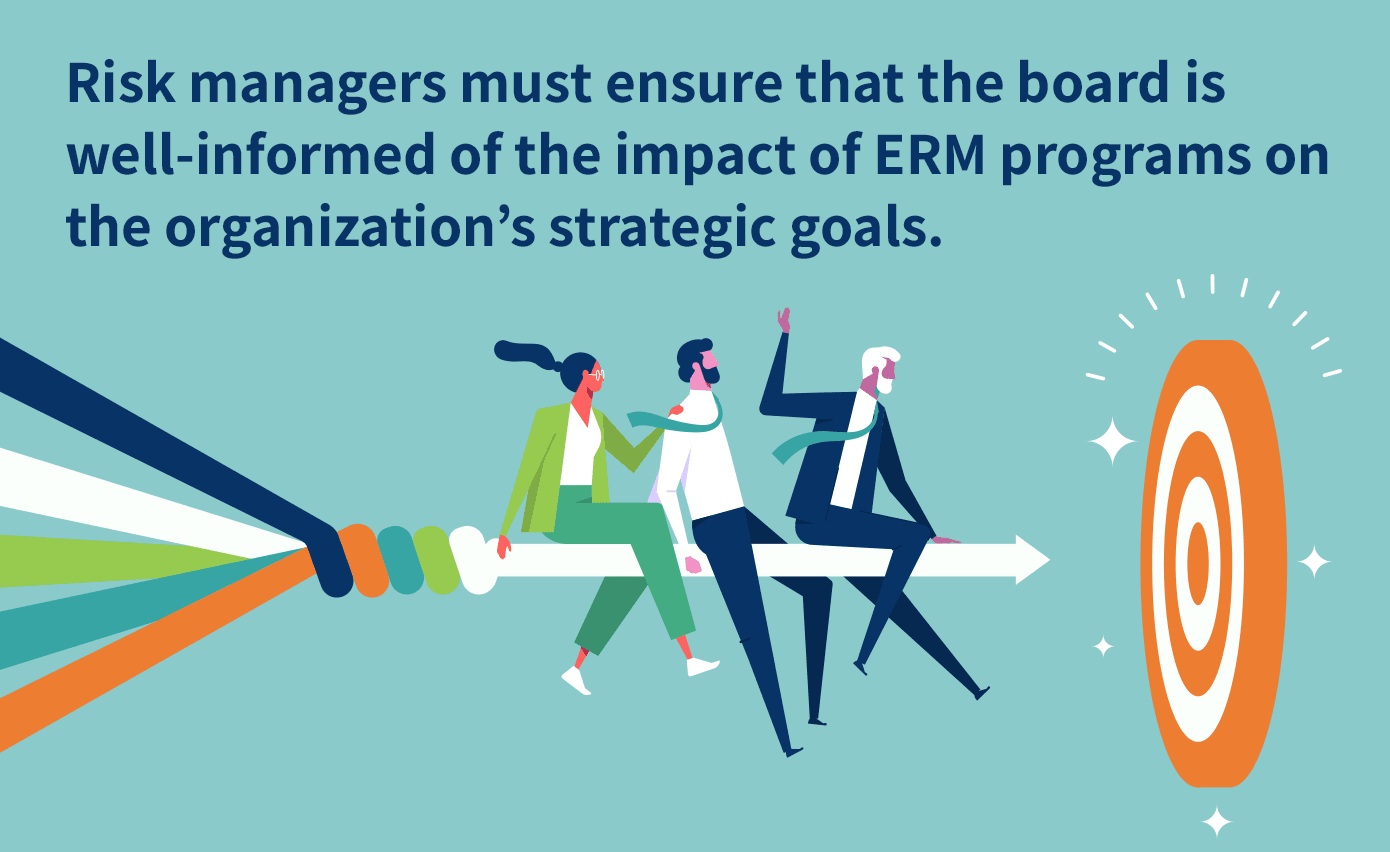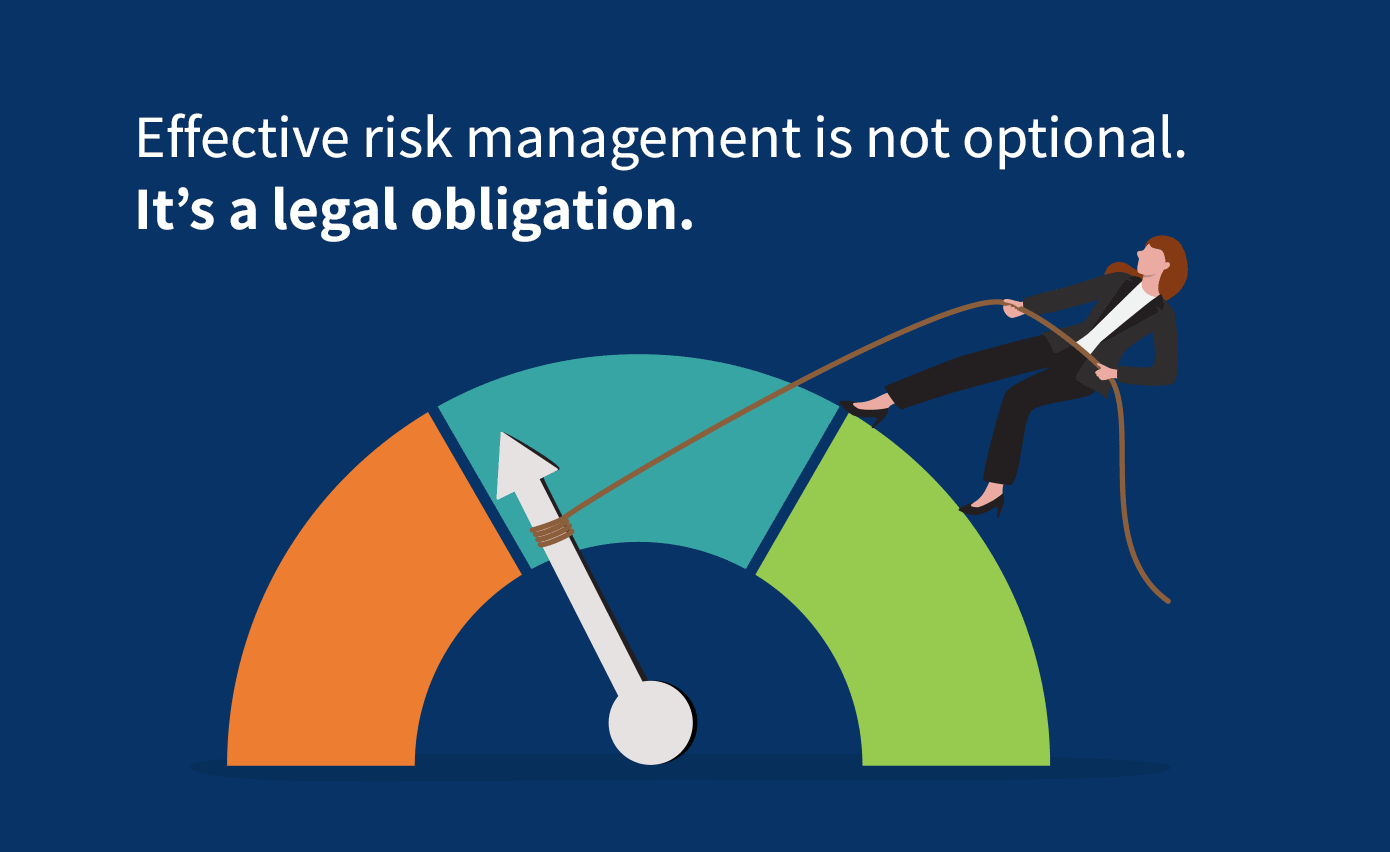Bridging the Gap: How Risk Managers Empower Boards
Last Updated: April 5, 2024
Welcome to the first installment of our series on presenting Enterprise Risk Management (ERM) to the board. In this dynamic era of the See-Through Economy, risk managers are the navigators who chart the course for organizations, guiding them through the unpredictable currents of uncertainty. As we embark on this journey, we will explore how risk managers can empower boards to understand and leverage ERM for safeguarding reputation and driving performance, ensuring that the strategic vision aligns with the ever-evolving landscape of business transparency and accountability. Stay tuned as we delve into the art and science of ERM reporting, strategy alignment, and the pivotal role of risk management in contemporary corporate governance.
Increased Pressure for ERM Reporting
The landscape of Enterprise Risk Management (ERM) reporting is experiencing a significant shift. Several factors contribute to this heightened demand for more comprehensive ERM reporting. Among these are the needs for greater support for risk management programs and the board’s increasing request for detailed information.
Historically, Boards of Directors were primarily accountable for risks at the CEO level. Now, their responsibility extends to risks with material impact at any organizational level, necessitating risk identification at the business process level where such material activities occur.
Amidst this backdrop, the fiduciary duty of directors comes into sharp focus. Directors are entrusted with the duty to act in the best interests of the corporation and its shareholders, which includes the duty of care, good faith, and loyalty. This fiduciary responsibility mandates that directors exercise due diligence and informed decision-making in their oversight role.
Regulations, along with judicial rulings such as Stone vs. Ritter, underscore the personal liability of board members in risk management and corporate governance. This accountability reaches into private companies and their supply chains, emphasizing that effective risk management is not optional but a legal obligation.
Boards now face a stark choice: implement effective risk management or disclose ineffectiveness to stakeholders. Ignorance of risks is indefensible and may lead to allegations of fraud or negligence.

Board Perceptions and Realities
Following this increased pressure for ERM reporting, risk managers find themselves in a pivotal position. They are often the unsung heroes within their organizations, wielding their ERM programs as shields to protect reputation, foresee future challenges, and enhance business performance.
Despite their critical role, board members may sometimes perceive risk management as a time-intensive process that detracts from other vital business operations, or they may question the cost-benefit ratio of such programs. It is incumbent upon risk managers to persuade board members of the effectiveness and value of ERM programs.
Alternatively, if the board already acknowledges the importance of robust ERM programs, they may simply seek more evidence of its effectiveness and its contribution to achieving their goals. Given the increased regulatory pressures, board members are more reliant than ever on risk managers to provide the necessary reports to substantiate the efficacy of risk management practices within their organizations.
Risk managers must navigate these perceptions and realities, ensuring that the board is not only convinced of the necessity of ERM programs but is also well-informed about their positive impact on the organization’s strategic goals. By doing so, risk managers affirm their role in empowering boards to meet regulatory demands and steer the organization towards sustained success.
Two Pillars of Effective Reporting
Effective risk management reporting serves as a cornerstone for demonstrating the value of ERM programs to the board. The two primary goals of this reporting are:
- Alignment of Risks and Activities to Strategic Objectives and Key Concerns: The board’s top priority is the company’s strategic goals, which are inherently cross-functional and event-based. Risk management plays a pivotal role in translating these broad objectives into actionable tasks within specific business silos. By doing so, it becomes clear how these activities—and the risks associated with them—affect the company’s strategic imperatives.
- Demonstrable Effectiveness of ERM: ERM is not just about managing risks; it’s a strategic endeavor that can provide a competitive edge through improved decision-making, efficient resource allocation, and minimizing exposure to adverse events. As the organization’s risk management maturity escalates, so does its capability to navigate various risks and achieve its objectives.
Incorporating these goals into ERM reporting ensures that performance is seen as a direct outcome of effective risk management. It’s essential for the board to share this perspective, as the right data collection and reporting techniques can substantiate the claim. Risk managers must therefore focus on these two goals to prove that their efforts are instrumental in enhancing business performance. By aligning risk-related activities with strategic goals and demonstrating the tangible benefits of ERM, risk managers can effectively communicate the critical role of risk management in driving business success.

Further Reading
Risk managers are the critical link between organizational resilience and board-level decision-making. By promoting a proactive approach to risk management and providing actionable insights, they enable boards to confidently address the complexities of the See-Through Economy. In partnership, they lay the groundwork for enduring success in a time of unprecedented change and transparency.
As we conclude this insightful exploration into the role of risk management within the boardroom, we invite you to deepen your understanding by downloading LogicManager’s comprehensive ebook, “Presenting ERM to the Board.” This valuable resource is designed to guide you through the nuances of effectively communicating the current state and value of your ERM program. It addresses the challenges of consolidating risk information across various business silos, maintaining a clear and unified view of risks for the board, and quantifying risks via enterprise-wide assessments. Moreover, it provides strategies for linking operational risks to strategic objectives and prioritizing control activities and metrics. Equip yourself with the knowledge to elevate your ERM presentations and align them with your company’s strategic vision for a resilient and prosperous future. Download your copy today and take the next step in mastering ERM reporting to the board.
